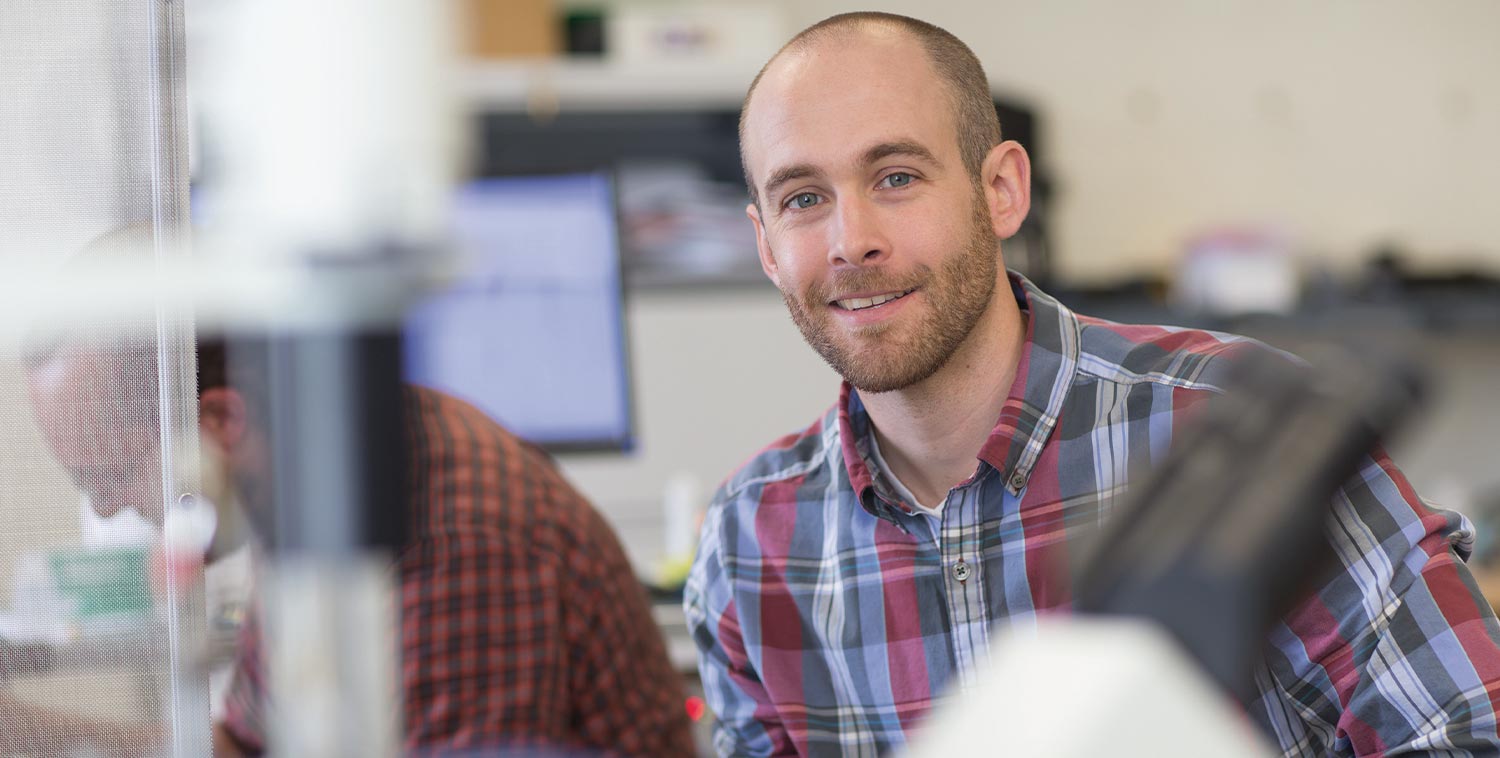Cell Reception
Understanding and controlling which materials gain entry into living cells holds great promise in a number of fields, from biomedicine to agriculture.
Andy Sarles, assistant professor in the Department of Mechanical, Aerospace, and Biomedical Engineering, will soon begin new research aimed at allowing such a breakthrough, which has earned him a prestigious National Science Foundation CAREER award of $540,000 over five years.
That project aims to understand how amphiphilic monolayer-protected nanoparticles, or AmNPs, interact with model cell membranes. Amphiphilic materials have both hydrophilic and hydrophobic characteristics, meaning they are both attracted to and yet repulsed by water.
“AmNPs have shown the ability to harmlessly pass through the outer membrane of a cell, yet how they do this is not well understood,” said Sarles. “If we can reveal these details, then there is great potential to use AmNPs as carriers for drugs or other materials that can be used to control cellular function.”
The team will apply and further develop this model system to study a specific type of striped AmNP produced by Swiss professor Francesco Stellacci at École Polytechnique Fédérale de Lausanne. By alternating back and forth between water-loving to water-hating sections of nanoparticles, Stellacci’s team discovered that AmNPs could pass through cellular membranes easily and without causing damage.
Sarles’s team will employ state-of-the-art methods to assemble and characterize realistic, yet simplified, model cell membranes that form at the interface between lipid-coated water droplets in oil.
This multi-phase system leverages the amphiphilic properties of lipids to spontaneously assemble at the water-oil interface and allows for creating a synthetic barrier between droplets that has the same structure and composition of cellular membranes.
Sarles said that while his team’s primary focus is to understand how these nanoparticles behave at a membrane surface and then improve methods to probe these intricate events, a longer-term goal is to focus on the best way of using them.
“If you can unlock details of how cellular membranes interact with synthetic nanoscale materials, you can engineer a variety of outcomes around those mechanisms,” said Sarles. “For example, you could engineer particles to deliver specifically targeted medicines for gene therapy or even to increase crop yield.”
Additionally, once you understand how to improve entry into cells, you can also engineer how to keep species out; something that could improve water and soil quality, or even prevent the absorption of cholesterol.
In addition to the research, Sarles has also made a point of integrating a set of education and outreach activities to disseminate to a broader community at UT and in Knoxville concepts related to the research.
Called INTERFACE, this outreach program will include both UT undergraduate researchers and journalism students as well as high-school students from the nearby L&N STEM Academy.
